The difference between a successful reef tank and one that fails is often a matter of the little details. One of these little details that cannot be overlooked is proper coral placement. With a new tank, you basically have a blank canvas with which to work. The main structure of the live rock is laid out, but how the corals are placed on it relative to the flow, light and each other will have long-term consequences on the health of the tank, often for years, so this needs to be taken into consideration when the corals are placed in the tank. This is especially important now that most corals added to a tank come in as frags rather than as large coral colonies.
On the one hand, frags may be more tolerant of small changes over large colonies as they have not grown in one place for so long that they have become accustomed to those conditions and as a result, are stressed when moved to a new location. Second, when placing frags it needs to be understood how much they will grow and that while the tank may look empty at first, this is short-lived so adequate space needs to be provided between corals. And lastly, only a small difference in conditions such as light and flow can have an impact on how corals grow and their coloration. All of this needs to be taken into consideration when placing corals in a new set-up tank.
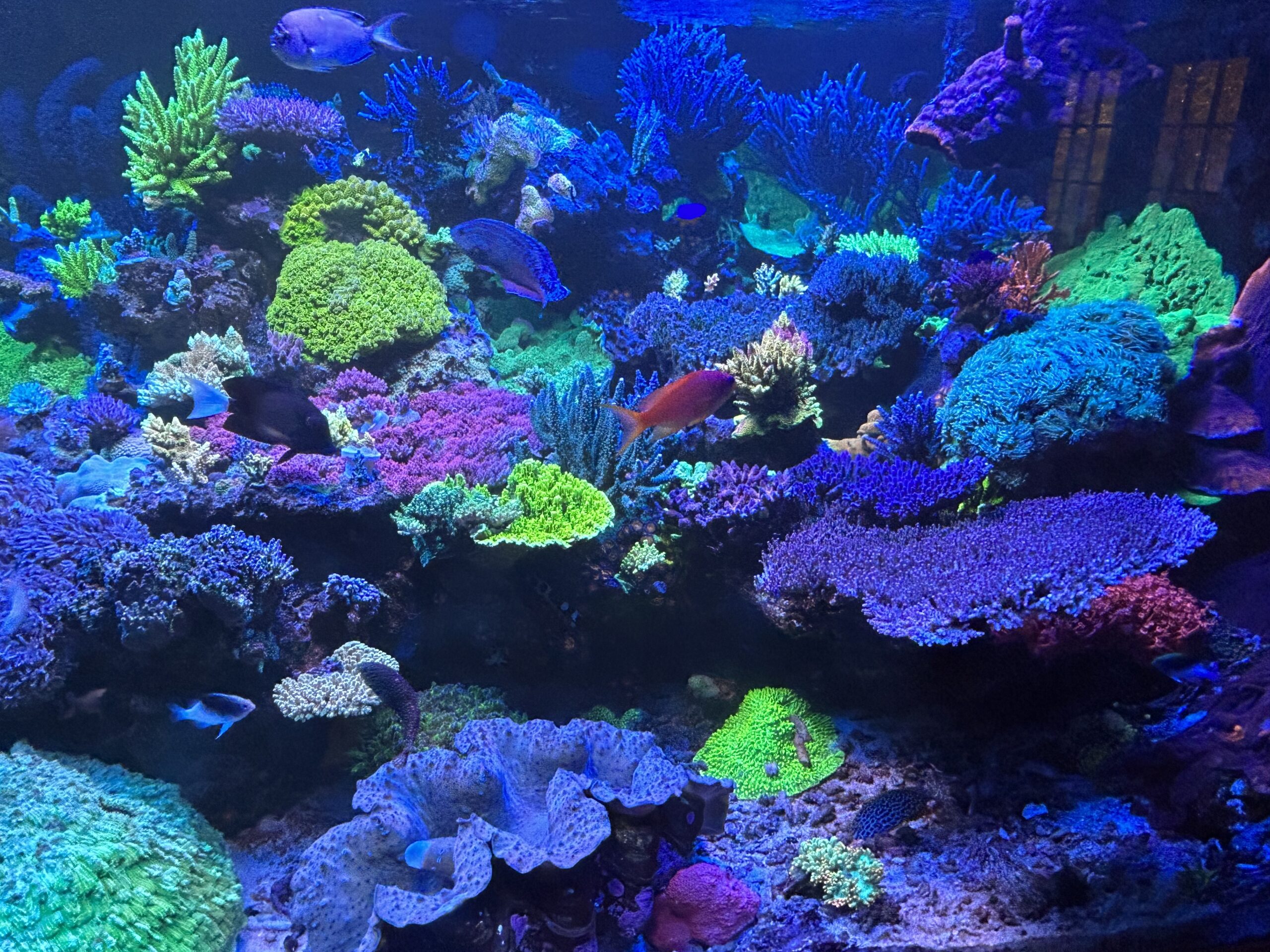
Before the corals are even added, consideration needs to be made as to how the corals will be mounted. Most coral fragments now come in on plugs with a stem. If the rock is drilled, which can and should be done before the frag plugs are added, they can be inserted into the holes. However, most of us do not do that but instead cut off the stems of the plugs and then mount the frags wherever we choose. I prefer this method to using drilled holes as it allows greater flexibility and if a coral is not doing well in a chosen location it can be easily moved. Once the stem has been cut off from the base, and the cut should be flush with the base which makes mounting easier the plug needs to be attached to the rock.
Over the years I have come to rely on the sandwich method of mounting which was developed by World Wide Corals. In the method, a dab of gel-type super glue, cyanoacrylate, like Polyp Lab Coral Glue, is first put on the plug, to that a pea-sized piece of epoxy, like Aquastick, Holdfast, or Poly glue, that has been thoroughly combined is placed on the glue. Then a final dot of the superglue is placed on that. The frag is then placed in its desired location and gently twisted into its spot. The twisting combines the glue and epoxy and meshes it into the rock so that the epoxy fits into the rock. The goal is to have the super glue hold the frag in place until the epoxy sets and permanently bonds the frag in place.
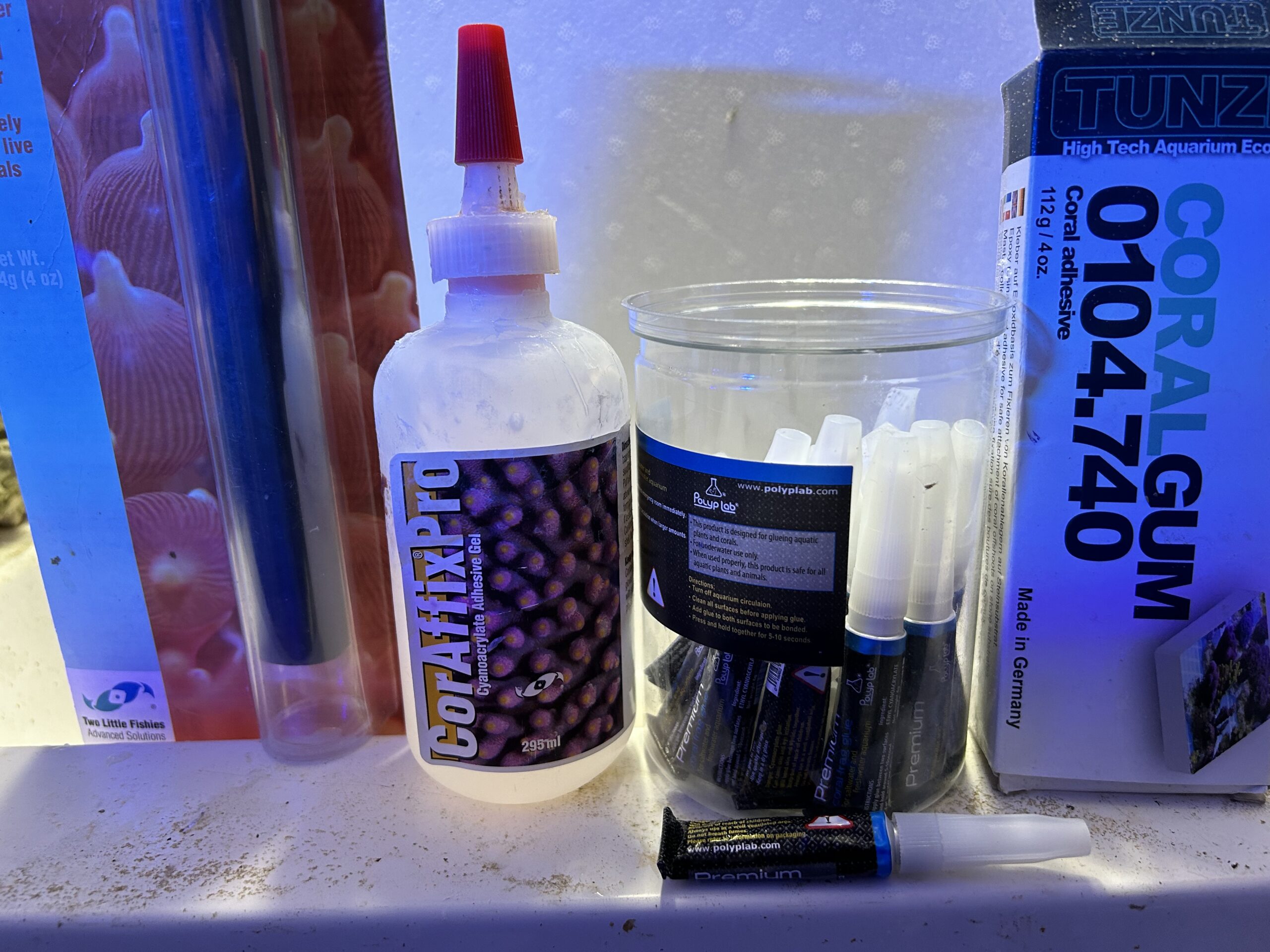
I have tried on many occasions to use only the glue, with the hope that the coral would grow fast enough to cover the plug and encrust to the rock before the glue loosens or a snail or urchin knocks off the plug, but unfortunately, this did not work very often. So now regardless of how few or many frags are being mounted the sandwich method is employed. This method also has an added benefit in that if a frag is knocked off in most instances there will be a telltale sign of a piece of residual epoxy indicating that a frag has been knocked off and needs to be retrieved.
Once the mounting method has been perfected it is time to start mounting the frags or colonies in their desired locations. Initially, only a few frags should be mounted to make sure that conditions are as they should be and that the mounting method being employed works. It is very upsetting to look at the tank the morning after mounting frags and find many or all of them dead or that none of them are mounted in their desired locations. So as with everything take your time and be patient.
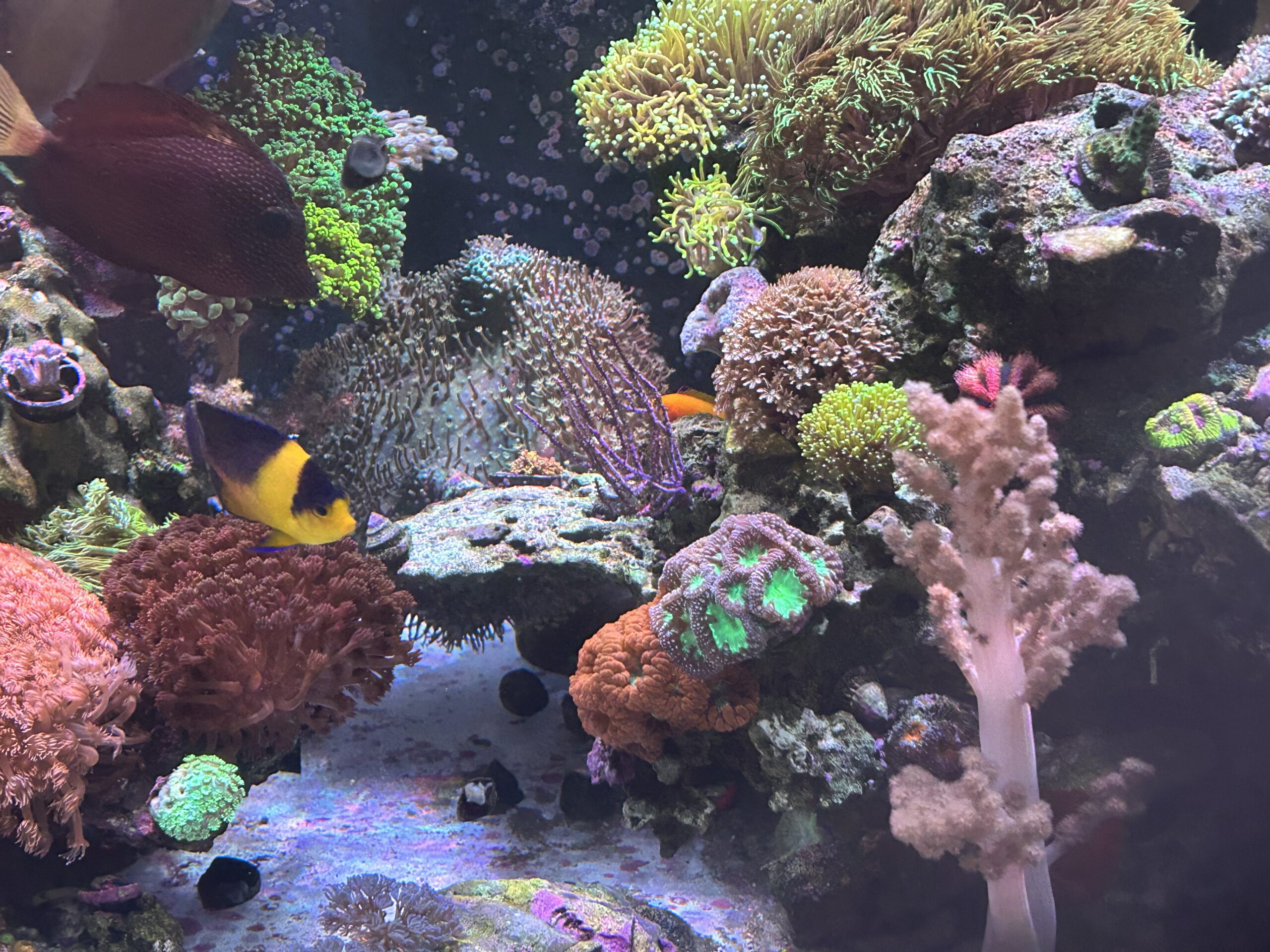
Before continuing a few other aspects of placement need to be considered. First is what type of corals are you setting into place. If sps they are a bit challenging so their placement is even more critical than other corals. They generally come from high-energy areas, so they do best in areas that receive high flow and intense light. So these corals tend to do best in the upper regions of the tank where lighting and flow are both strong. Conversely, soft and LPS corals tend to come from lower energy areas of the reef so they do best in the lower regions of the tank and even beneath overhangs where the lighting and flow are not as strong. Not that they come from dead areas, just areas where the flow and light are not as intense.
Besides these considerations for placement another aspect that needs to be considered is coloration and type of corals. In this regard when placing corals their coloration needs to be blended and balanced. That is you do not want all of the green or blue corals together as then their individuality is lost and their beautiful colors are not as pleasing to the eye. Instead, the corals should be placed so that their individual colors play off against one another. Similarly, corals should not be placed so that all of one type is together and then a patch of the same type is next to that.

Several different staghorn or table corals should be mixed together as should leather corals and acans or zoas. Otherwise, as these corals grow the resultant “mini reef” just looks like mismatched patches that do not look anything like a small section of a reef where they should resemble the harmonious blend of corals as we see on a reef. Getting the reef to look exactly as desired will take time and some changes, so do not get discouraged and learn from each change.
In addition to the type of coral, color, and growth rates another aspect that needs to be considered is the aggressiveness of the coral. Managing this aggressiveness will be the topic of a future article, however, before delving into how aggressive most corals are, it needs to be understood when placing corals in a tank that they will all battle one another to some extent so they all require space to grow when placed on the aquascape. If adequate space is not provided it may either retard their growth or allow a more aggressive coral to kill its neighbors. So providing adequate space is of critical importance in a new tank, even though providing this space at first may make the new tank look barren and empty.
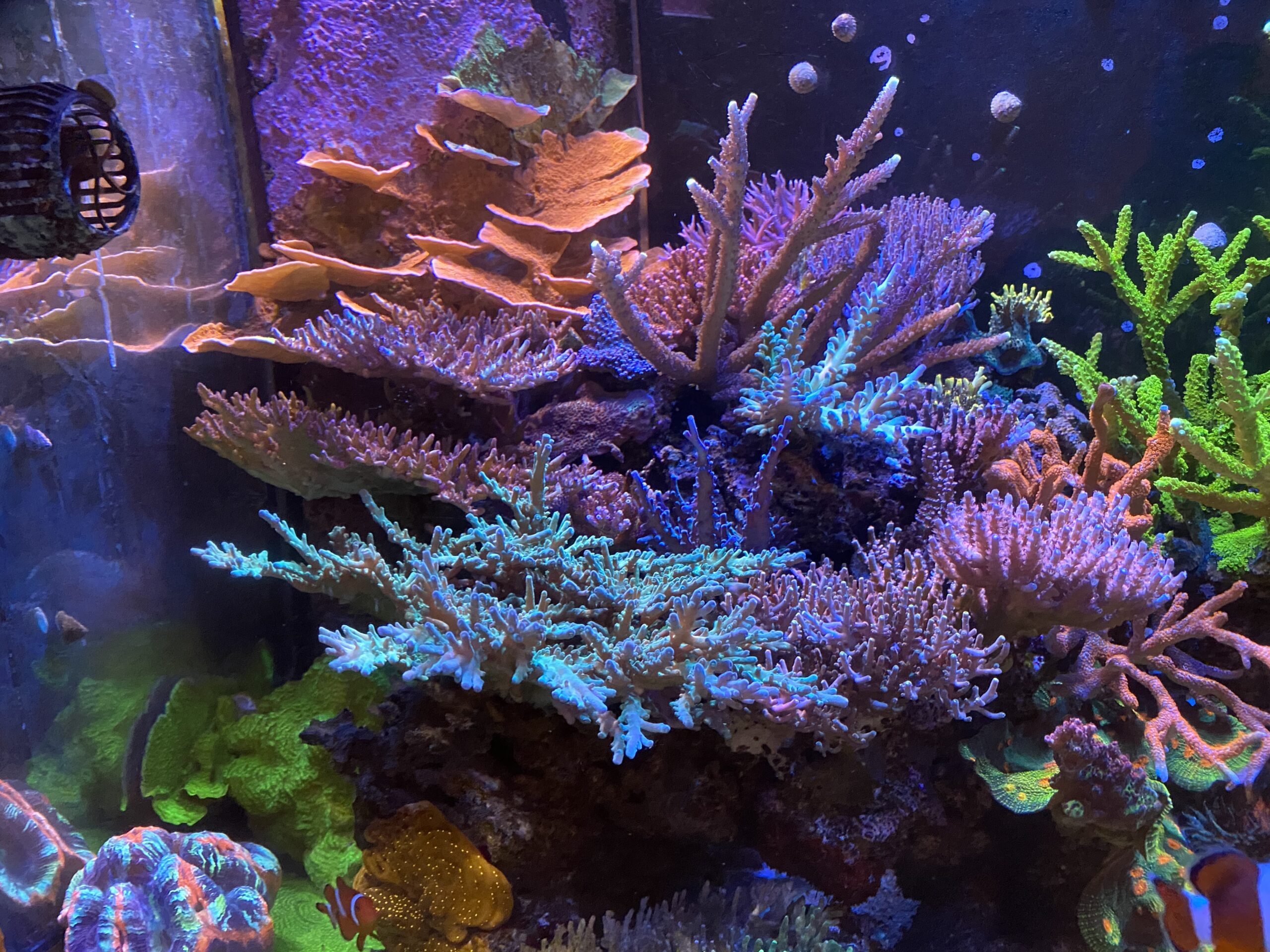
One of the ways corals also inhibit the growth of neighboring corals is through overshadowing or overgrowth. For this reason, the growth patterns and height of the corals need to be considered when placing them in the tank to minimize this from happening. For example, table Acroporas or Montipora caps tend to grow out like plates and grow quickly and thus overshadow any corals growing beneath them.
For this reason, they need to be placed in the lower regions of the tank and not above any slow-growing corals that they can overshadow. Similarly, staghorn Acroporas and some Leather and Sinularia corals can grow quite tall and branch out and overshadow neighboring corals in this way. For this reason, they should be placed along the back of the tank or along the sides so that they are away from neighboring corals that they can overshadow.
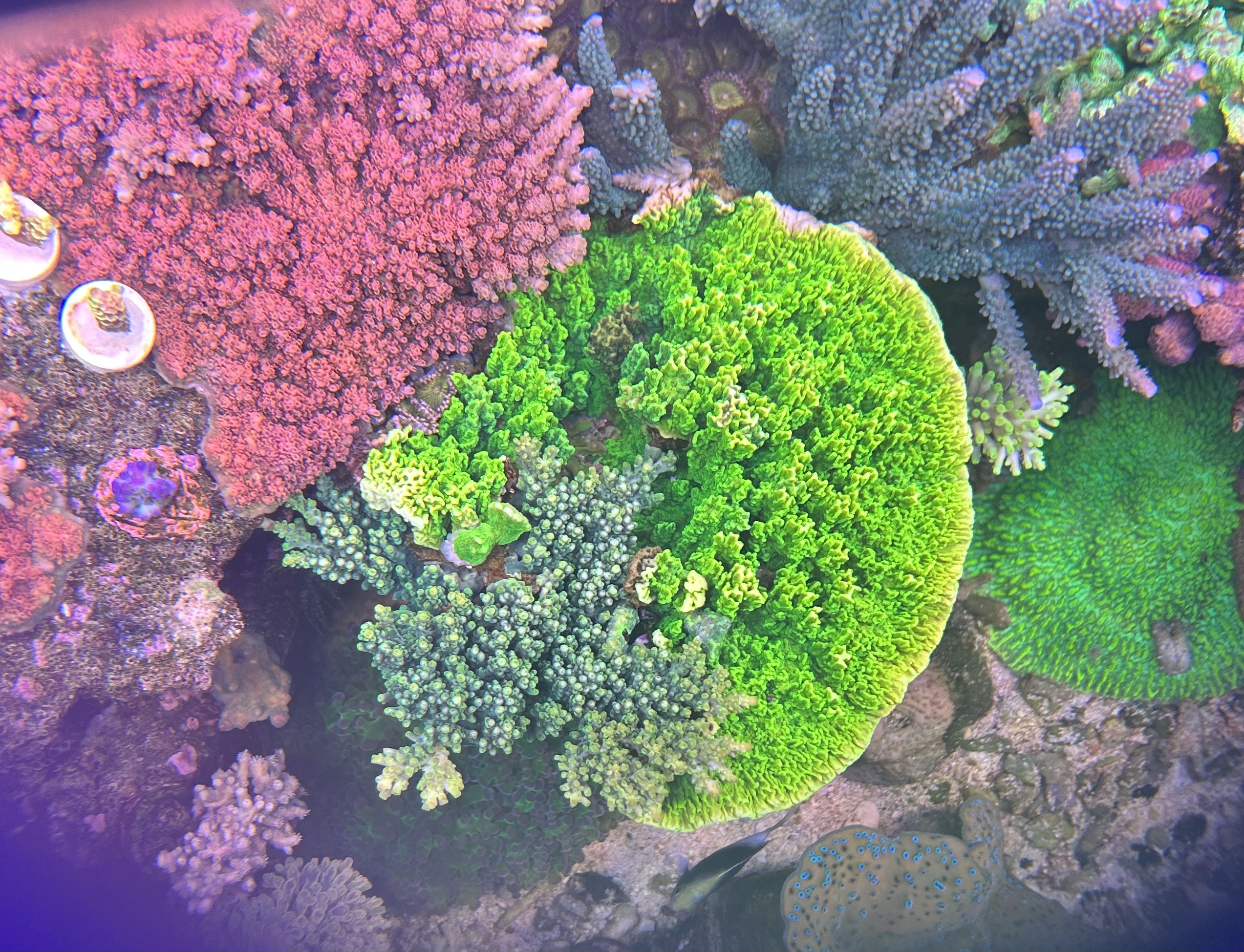
The last aspect that needs to be considered when placing corals in a tank is time. Time affects everything in a reef tank in that as corals grow they affect not only the neighboring space but also the flow, the light, and even the aggressiveness and microbiome of neighboring corals. Sadly, I have learned that it is never too early to start understanding how important this is and to plan accordingly. This can be as simple as understanding that more flow may need to be introduced over time or that a fast-growing coral may need to be pruned more often than its neighbors. Or if planning has not been done properly, it may mean something more dramatic like having to remove an overly aggressive or fast-growing coral.
Visit and view successful tanks and from the ones that you admire, use them as a blueprint for how you want your tank to look and set up a plan and diagram based on how they look. Even though you may try to emulate how their tank looks, every tank will be different so do not worry that you will just have a copy of theirs. But looking at other tanks can provide a good base from which to start in terms of placing corals.
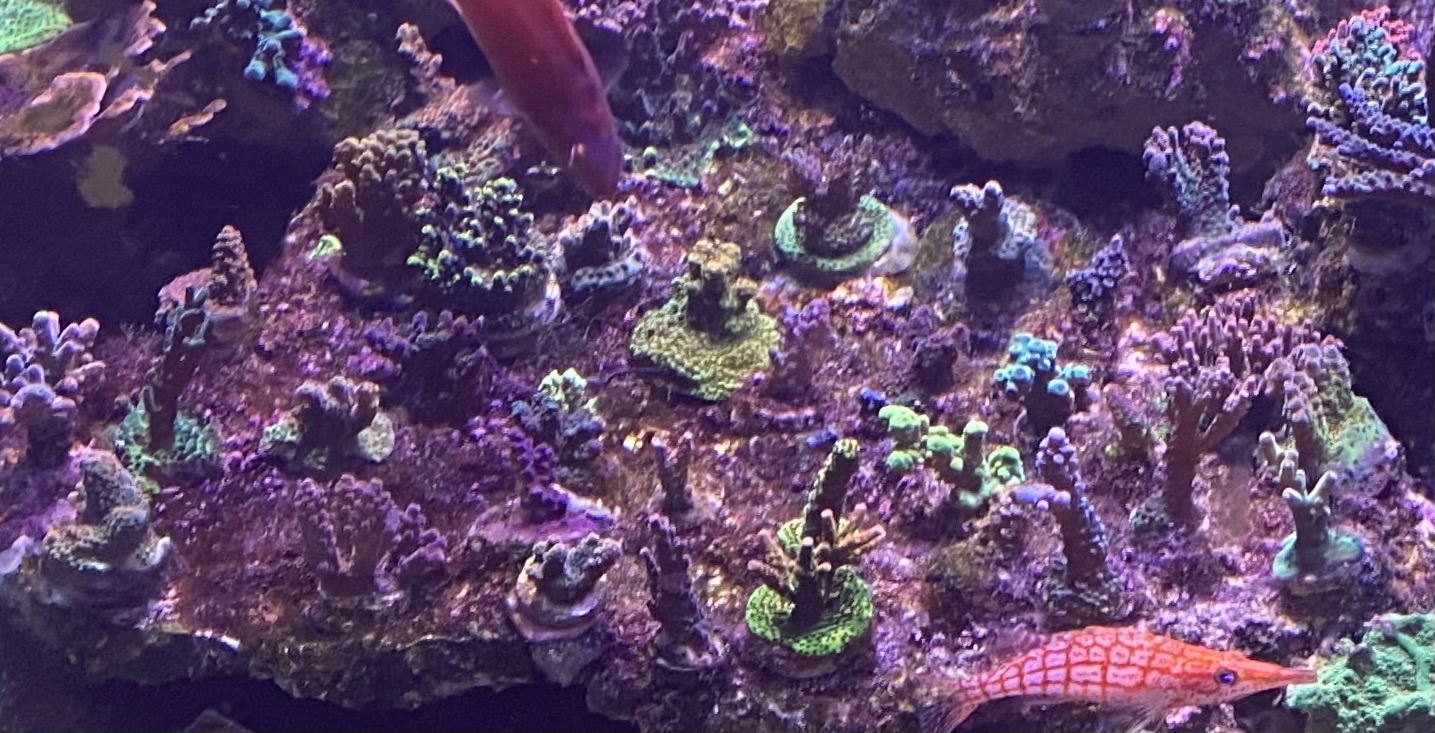
Any time a coral is moved or put into a new location it usually takes two to three months at a minimum to adjust and start to grow. This is why proper placement from the start is so critical and why you do not want to move corals willy-nilly all the time. Take your time, and have a plan and diagram of where you want corals to grow based on color, growth rate, aggressiveness, and type. Understand that corals grow at different rates, and this can affect the plan, at least early on. Take all of these factors into consideration when setting corals into their desired locations. Lastly, this is one of the really fun aspects of setting up a tank. so have fun doing it and your reward will be a successful tank full of colorful corals that will provide you with years of enjoyable viewing.


